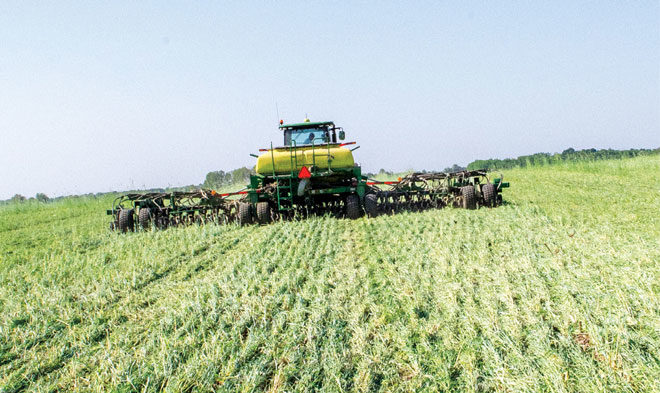No-Till Farmer
Get full access NOW to the most comprehensive, powerful and easy-to-use online resource for no-tillage practices. Just one good idea will pay for your subscription hundreds of times over.

Aside from the planter and combine, drills are one of the most common pieces of equipment seen rolling across no-till fields today — about 64% of readers who participated in the 2016 No-Till Operational Benchmark Study said they own and use a no-till drill. And with cover crops picking up acreage in no-till systems, no-tillers are no longer relying on the tool just for seeding cash crops.
But despite their popularity, no-tillers have seen their share of challenges with drills, including inaccurate seed placement, poor seed depth control and hairpinning.
Part of the reason for these problems is due to the fact that drills weren’t designed for no-till.
“No-till farming is a relatively new phenomenon, and more effective methods to plant in residue are continually being developed,” says Matt Hagny, president of Exapta Solutions in Salina, Kan., and consulting agronomist for no-till systems. “But in the U.S. and Canada, most planters and ‘no-till’ drills are ill-suited to the task from the moment they’re built — being originally designed for tilled seedbeds.”
With a demand for drills that can handle heavy residue, equipment manufacturers have made — and continue to make — adjustments to their designs to better perform in no-till conditions.
Cody Wilkinson, John Deere’s product manager in air seeding marketing, says the no-till revolution began to significantly change drill design in the early 1990s, moving away from hoe-style openers mounted on springs to row units very similar to those used on row-crop planters.
Deere’s answer to the…